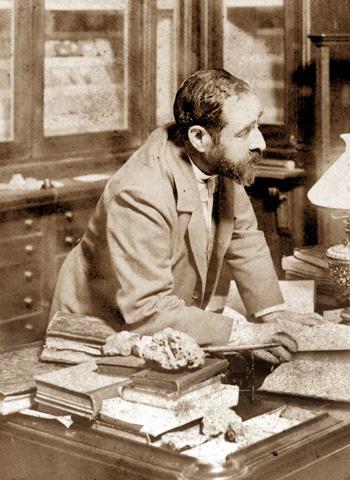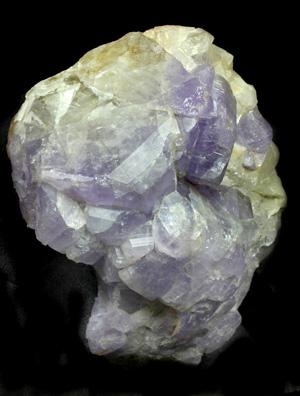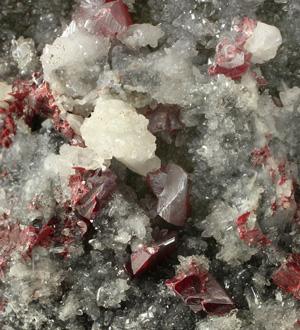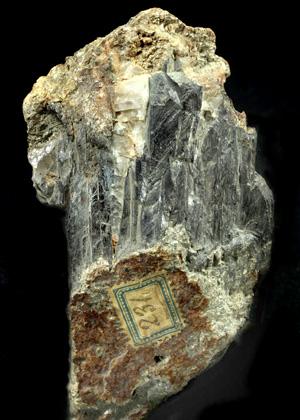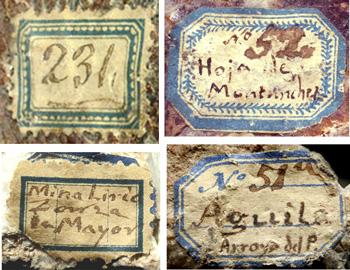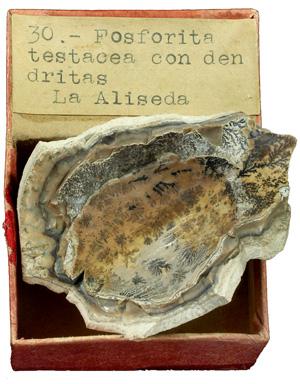Mallada, Lucas (1841-1921 )
Lucas Mallada y Pueyo was born in Huesca, Spain, on October 18, 1841, the son of María Pueyo and Manuel Mallada, an elementary school teacher.Mallada and his family moved to Zaragoza in 1847, and thence to Madrid in 1859. In 1860 he began his studies at the School of Mining Engineers, obtaining the title of Mining Engineer in 1866. He worked as an engineer in the mines of Almaden, and then took a teaching position in the Foreman School of Mieres. In 1870 he joined the "Comisión del Mapa Geológico," the origin of the current Instituto Geológico y Minero de España, the Spanish Geological Survey, where he spent most of his professional career.
Mallada wrote a large number of books and papers, mainly about mining and the regional geology of Spain, but also about political issues. He was linked to "Regenerationism," an intellectual movement in Spain that sought to make an objective and scientific study of the causes of Spain's decline and to propose remedies.
Mallada is considered one of the Fathers of Spanish Geology because of his Explicación del Mapa Geológico de España, published in 7 volumes between 1895 and 1911. This monumental work, totalling 3,740 pages, is a detailed explanation of the 1:400,000 geologic map which had been published in 1889. He also published a geological memoir about Huesca province, and (with Justo Egozcue) another about Cáceres province, with much information about the phosphate mines. The materials collected in his field work, mainly rocks and fossils, were deposited in the Museum of the Geological Map Commission. Only a small portion of the rock collection has been cataloged. Mallada died on February 7, 1921.
In 1925, the "Escuela Normal de Maestros" from Huesca, an institution created in 1842 to train elementary School teachers, received about 550 Spanish mineral specimens which had belonged to Mallada's personal collection, as a donation by his heirs. The specimens are all "miniature" or "large miniature" in size. Most of the specimens were self-collected by Mallada at the localities he studied, many of which are currently exhausted or closed. These include many apatite and phosphorite (phosphate-rich rock) specimens from Cáceres, wolframite specimens from the mines of Casayo (Orense) and Montoro (Córdoba), native silver from the El Horcajo mines (Ciudad Real), and cinnabar from Almaden, among many others. Most of the specimens are of moderate quality, as a representation of the ores extracted.
His collection specimens were stored in small, red cardboard boxes. All the boxes are labelled with a number, the name of the mineral and the locality of origin. Some specimens also have one or two small older handwritten labels attached, with catalog numbers, and in some cases also the species name and/or location. These mineral specimens have only recently been inventoried and studied, and are now part of the Natural History Museum of Zaragoza University.
Click to images to view larger
To contribute more information please E-mail us at:
minrecord@comcast.net
Citation format for this entry:
WILSON, Wendell E. 2022
Mineralogical Record
Biographical Archive, at www.mineralogicalrecord.com
minrecord@comcast.net
Citation format for this entry:
WILSON, Wendell E. 2022
Mineralogical Record
Biographical Archive, at www.mineralogicalrecord.com
Fluorapatite crystals, 4 cm, from the Lirio mine, Zarza la Mayor, Cáceres, Spain. Mallada collection.
Wire silver from the El Horcajo mines, Almodóvar del Campo, Ciudad Real, Spain, in a box typical of the Lucas Mallada collection.

